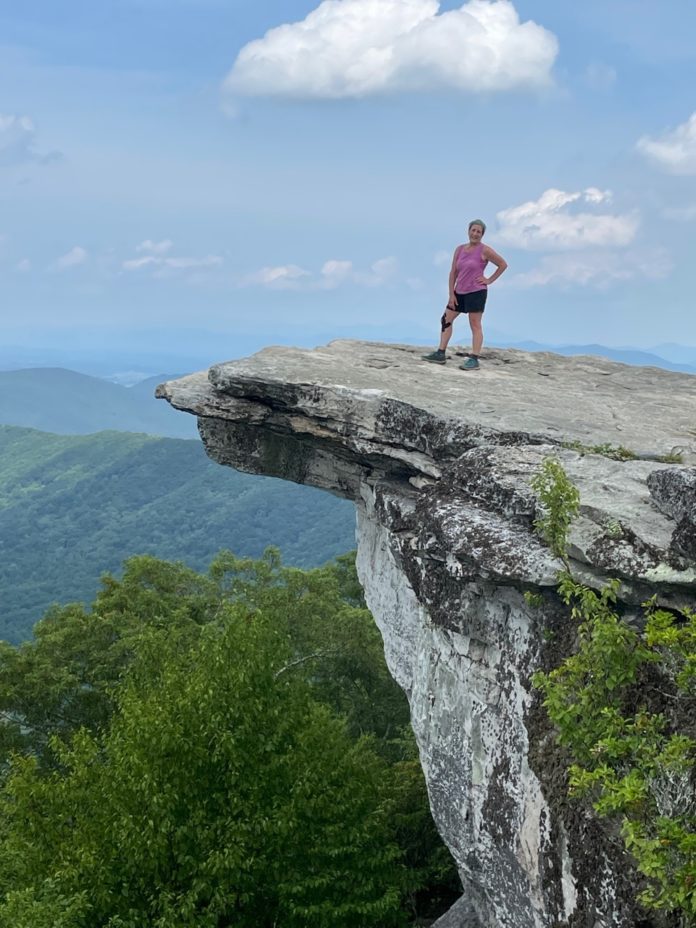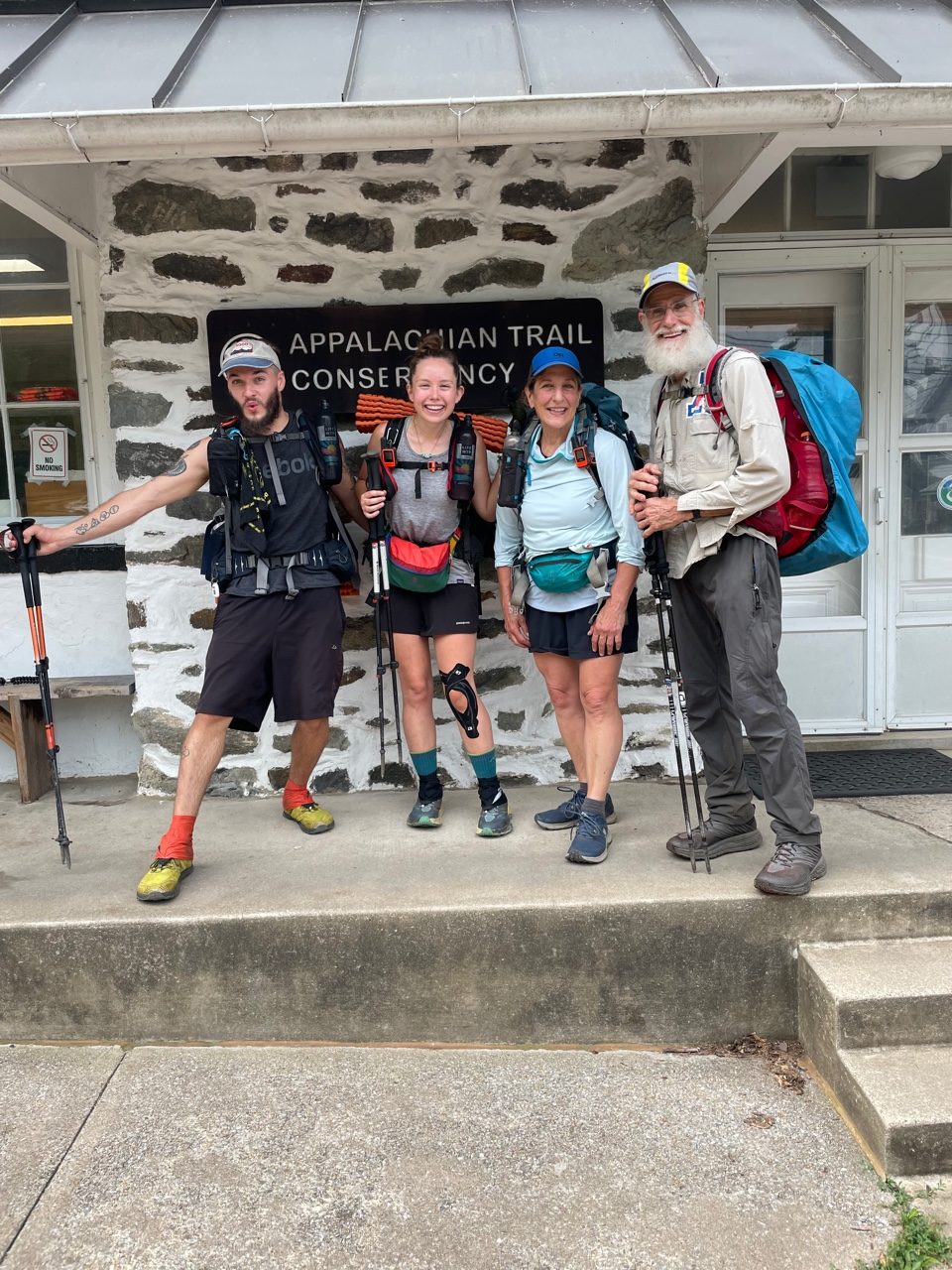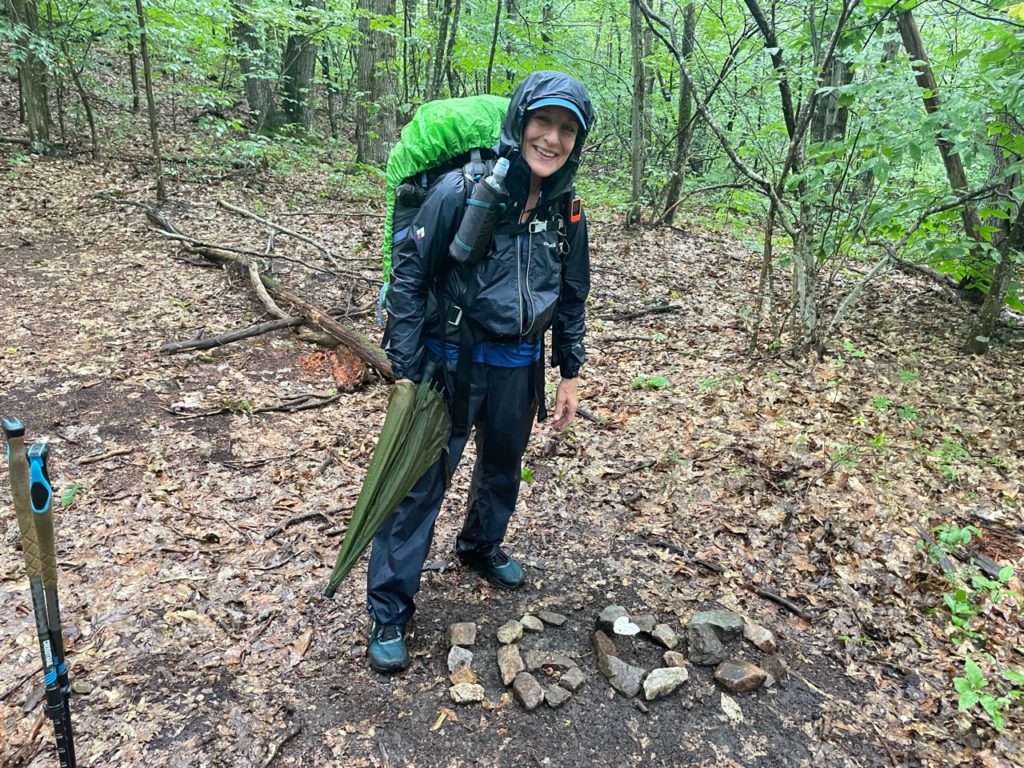
Author and humorist Bill Bryson has written countless popular books about his travel adventures, including a New York Times bestseller titled “A Walk in the Woods.”
Bryson, you see, had a memorable time in his failed attempt to hike the Appalachian Trail (A.T.) which winds through the woods from Georgia to Maine and covers some of the most breathtaking terrain in America.
He was certainly not alone. Annually, more than 3,000 people attempt to hike the full length of the A.T. and only about a quarter (750 people) finish.
Unlike Bryson, retired Cordova High School English teacher Deb Adams completed this 2,194-mile trek. She began on March 3, 2022, at Springer Mountain in Georgia, and finished on September 30, 2022, at Katahdin, Maine. She took the month of April and one week in May off, plus a “few zero” days here and there, “but not many,” she said.
Her time adds up to roughly six months, which is spot on with the average time of five to seven months it typically takes. Adams averaged about 15 miles a day, carrying a pack around 25-28 pounds.
The details of this amazing accomplishment are worthy of a two-part series, based on information she provided. Her quotes are below.

First, I asked her about traveling companions and learned a new word: “tramilies,” which is a combination of “trail” and “families,” and refers to the friends hikers meet and travel with on the trek.
“Renee Lindow hiked the month of March with me, then I was on my own,” she said. “I had a couple of tramilies — a woman from Michigan, a couple from Maine and an older hiker from Arizona (all four of us hiked together for well over 500 miles). I was on my own for New Jersey, New York, Connecticut, and Massachusetts. Closer to the end, in Vermont, I teamed up with a woman from North Carolina.”
Why did you do it?
“I grew up near the Appalachian Trail and always wanted to do it. It was now or never.”
What all did you carry?
“My pack was around 25-28 lbs. With longer carries between towns, it could go up to 30 lbs. Food weighs the most. I carried a two-person tent, sleeping quilt, sleep pad, small blow-up pillow, cook stove, fuel can, a titanium cup and a long handled spoon, water filter, two water bottles (light weight Smart Water bottles), some warm clothes, camp sandals, a bear bag and hanging line, cell phone, inReach GPS, a battery for my phone, and a few personal items.”
(Note: Food, a bear attractant, is hung in a bag suspended in a tree when camping.)
Best day and worst day?
“The average for the whole hike was 15 a day. I did a lot of 18- to 20-mile days. Best day mileage-wise was 22 miles (very hot day). Worst mileage was 7 miles in New Hampshire. The best day (as a memory) was McAfee Knob in Virginia. The two worst days: Rainy/snowy day in the Smokey Mountains (came close to being hypothermic) and The Kinsmans in New Hampshire. It took 13 hours to hike 16 miles. We hiked the last 3 hours in the dark.”
Where did you camp?
“I ‘stealth’ camped often — camped where there was flat ground, off the trail, not an “official” campground, but it’s allowed on the trail. Shelters are about every 8-2 miles. I stayed in a few, mostly to get out of the rain. I otherwise camped in my tent.”
You mentioned Trail Angels. What are they?
“Trail angels are people who support hikers —with rides, food, shelter. Some are former hikers who want to give back. Others are just great people. Some trail angels set up whole kitchens at trailheads and cook meals. Others set up lawn chairs near a trailhead and had cold drinks, beers, cookies, watermelon, etc. Then other trail angels were anonymous — they left coolers with water, soft drinks, Gatorade. I called people who gave rides into town from the trailhead trail angels as well — some would give rides just to be kind. One guy picked us up, drove us 6 miles to town and took us out to lunch.”
Was water an issue?
“Water was never an issue until Pennsylvania. It had been an especially dry spring and summer. There was little water to be had on the trail. Some sections were 20-mile water carries. Fortunately, angels left gallon jugs of water in strategic places. It was really hot in Pennsylvania and Connecticut. Some days I looked like I’d been swimming, I had sweated that much!”

Did you keep a journal?
“Yes. It got hard to keep as the trail went on, just because all you want to do at the end of the day is get to sleep.”
Bear spray? Problems with critters? “
“No bear spray. It’s another thing to add weight to your pack. There were plenty of bears from Virginia to Vermont. I saw only two — walked right past a mama with cubs in a tree, and one tried to get into the shelter I was camped next to. They are all black bears on the trail. I came close to stepping on a rattlesnake in NJ. And we ran into a fisher cat one afternoon. Fortunately, it ran up a tree. Lots of deer from Virginia to Connecticut. The shelters often have mice. Another reason not to sleep in them!”
Bugs?
“Ticks — everyone I hiked with got bit. I was lucky to not have any tick bites. I had bugs in my eyes often – VERY annoying!”
Walking in the rain?
“You just got wet …. It’s useless to wear rain gear in the spring/summer. You’re sweaty on the inside and wet on the outside. I did use a backpacking umbrella few times. It kept my head dry at least.”
(Next week: More details and the conclusion of this amazing trek by Deb Adams)





